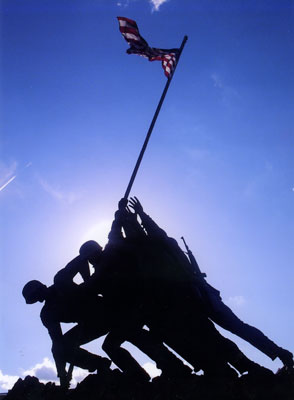All Nonfiction
- Bullying
- Books
- Academic
- Author Interviews
- Celebrity interviews
- College Articles
- College Essays
- Educator of the Year
- Heroes
- Interviews
- Memoir
- Personal Experience
- Sports
- Travel & Culture
All Opinions
- Bullying
- Current Events / Politics
- Discrimination
- Drugs / Alcohol / Smoking
- Entertainment / Celebrities
- Environment
- Love / Relationships
- Movies / Music / TV
- Pop Culture / Trends
- School / College
- Social Issues / Civics
- Spirituality / Religion
- Sports / Hobbies
All Hot Topics
- Bullying
- Community Service
- Environment
- Health
- Letters to the Editor
- Pride & Prejudice
- What Matters
- Back
Summer Guide
- Program Links
- Program Reviews
- Back
College Guide
- College Links
- College Reviews
- College Essays
- College Articles
- Back
World War Two Guns that Changed War
World War Two Guns that Changed War
All throughout history, one of the biggest drivers to advance technology is war. It’s pretty simple, each side wants the newest technology so they can win the war, and thus an arms race begins. While war can bring about great things such as improved medicine, this paper is a focus on four guns used during world war two that changed the face of war as anyone knew it: the Browning Automatic Rifle (B.A.R.), the Sturmgewehr 44 (STG. 44), and the original M1 rifle series.
The Browning Automatic Rifle was made in 1918, but was too late to make a major impact in the first world war. This did not stop it from making its mark on history. The B.A.R. is a squad support weapon, and its role is to lay down automatic fire to cover a squad’s movement or to simply keep the enemies heads down. Created during a time where the average soldier carried a bolt action rifle, the B.A.R. revolutionized what a man could carry into battle. Although the gun was very big, and it had a small magazine, it was still light enough to be carried by one man, whereas machine guns of the time in WWI and in WWII required a whole team of men just to man and move it. The B.A.R. was used to deadly efficiency in both the Pacific and the Atlantic theatres of war, and while the B.A.R. is not in service in the U.S. Army, there are many different squad support weapons in use today, in all armies of the world.
The next gun could easily have changed the tide of the war in favor of the axis powers had it been mass produced only a few years earlier than it was. Kept a secret from Hitler himself after he turned it down, the Sturmgewehr 44 is arguably the first true assault rifle. The STG. 44 was a new gun, and it sparked an age of rifles. During world war two, most infantry weapons sported large amounts of wood, whereas the STG. 44 only had a wooden stock. When allied troops first encountered the weapon, it was often described as alien weaponry. Capable of laying down accurate and steady firepower at medium ranges, the STG. 44 was the perfect infantry weapon. In scenarios where soldiers could only use semi-automatic weapons to engage each other accurately, a soldier could now accurately empty a whole magazine at his foe, at the same range. The STG. 44 and the AK-47, the gun with the most variants in use around the world, are striking, and many argue that the AK-47 is actually a copy of the STG. 44. Once again, this massive technological advancement didn’t have much time to alter the course of the war, but it sure did change the world that we knew, and paved the way to the weapons that are being used this very day.
World War Two brought an end to the era of the bolt action rifle, and ushered in a new age of rifles, but not all of these rifles were automatic like the STG. 44. The M1 rifle series, used by the United States, phased out the Springfield; a historic, world war one era, bolt action rifle that was the standard rifle of the American armed forces. The M1 series was comprised of the M1 Garand and the M1 Carbine, and although they looked quite different, they operated relatively the same, with the major differences between the two is that they looked different and that the M1 Garand was clip fed, while the Carbine was magazine fed. Though they were different, both guns were easily carried by an infantryman, and the carbine actually weighed less than the Springfield it replaced. Both rifles were a big hit with all armed forces, from the marines to the paratroopers. Now, soldiers could carry and fire a weapon that allowed them to fire a weapon several times without having to manually reload each shot. The Garand was built more for the infantry. It was long, heavy, and comprised mainly of wood and a metal barrel and inner workings. The Carbine was quite the opposite, while it did feature wood, some variants even had a collapsible stock as well as the Carbine was shorter, weighed less, and was generally faster to reload. This made the carbine a great choice for paratroopers, who had to move quickly, as well as be able to fight the second they hit the ground. The Carbine was in service in the US Army up through the Vietnam War. The Garand saw conflict for many years as well, and it was a favored choice for sniper rifles for a very long time.
These guns changed the world in a way no one could predict. The weapons in use today were inspired, and sometimes are even copies of the weapons of old. These four rifles are only a glimpse at what weapons of the past have done, and how they impact the lives of soldiers on both sides today.

Similar Articles
JOIN THE DISCUSSION
This article has 0 comments.
